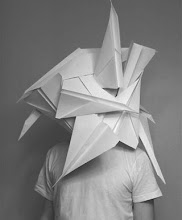
Once again, during the exploration of new materials I found a very deep relation with the human body, human skin is the most complex material ever, from the point that it reacts to any change in the environment, generating physical changes and developing systems in it to protect and provide information to the body so it can generate protection systems to contra rest the outside phenomenon so it can develop in a suitable way.In the re invention of materials exists a tendency in the search of how a material can act in response to the facts that are interacting with it, replying the theory of cause and effect.This new materials are called response materials, sensitile is an example of this kind of materials it made out of hundreds of light guides carved into a transparent block of acrylic polymer to create each tile. Together, these fiber-optic elements shine and sparkle in response to moving light and shadow it also picks up and disperses nearby colors. The human skin reaction when it’s exposed to sunlight it develop a change of color to protect the body, so the material is not protecting anything at all but it generate some changes out of the interaction with light as the human skin does.Blab Italia has design some tiles called living surfaces developed in two different materials glass and floor tiles made out of layers of acrylic and magnetic particles, so with people interaction the tiles generate physical changes, but some how the changes we get to see in this response material hark back skin’s reactions to cold or hot objects or different climates.As well The Living Company create systems and materials that can perform out of the interaction with people and they recently design a system called kinetic glass that response to external particulars made out of a series microprocessors that react to unhealthy earth, generating a physical deformation of the glass.Besides this architectural materials in robotics, Takao Someya Group developed a synthetic "skin" that is almost as sensitive as our own skin in terms of temperature and humidity, in addition they are trying to make it elastic like skin. Another synthetic skin in the works by Scott White and team is a self-healing material.Consequently the group of all this materials in one indicate us that the researchers and developers of new materials is to redesign a new skin that can have as much as function, volume and color changes, flexibility, malleability, self healing, like the human skin in order to provide to architecture and design in general, the possibility to generate intelligent objects that can response to the phenomenon they are exposed to and at the same time objects that can work together with the environment for the good of our planet in terms of sustainability.



